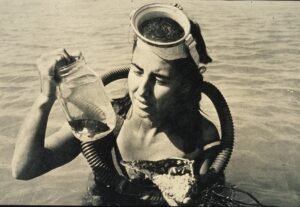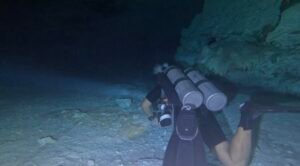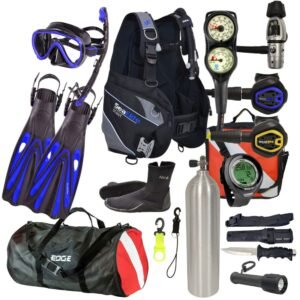Welcome, fellow diving enthusiasts! Whether you’re an experienced diver or just dipping your toes into the underwater world, understanding the language of scuba diving is essential for a safe and enjoyable experience. Welcome to the ABCs of Diving, where we will explore different scuba diving terms as we go through the alphabet. To read previous posts from this column check out our other blogs. Today we continue with the letter S:

SMB (Surface Marker Buoy): An SMB is an inflatable buoy that divers deploy to mark their position on the surface. This tool is essential for increasing visibility to boats or dive teams when a diver is surfacing, especially in areas with high boat traffic or when drift diving. It also signals the diver’s location during their ascent.
Safety Stop A safety stop is a pause divers make, typically at a depth of around 3-5 meters (15 feet) for 3 to 5 minutes, at the end of a dive. The purpose is to allow nitrogen to safely leave the body, reducing the risk of decompression sickness. It’s a critical part of safe diving practices, especially after deeper or longer dives.
SCUBA (Self-Contained Underwater Breathing Apparatus): SCUBA is an acronym that stands for Self-Contained Underwater Breathing Apparatus. It refers to the equipment used by divers to breathe underwater, which includes a tank, regulator, and other essential gear. The word “scuba” is now widely used to describe the activity of diving as well.
Second Stage: The second stage of a regulator is the component that delivers air directly to the diver. After the first stagereduces the high-pressure air from the tank, the second stage further regulates the pressure to a breathable level, allowing divers to inhale safely underwater. This stage is what the diver breathes from via a mouthpiece.
Shore (Beach) Diving: Shore diving refers to diving from the shore, rather than from a boat. It’s one of the most accessible forms of diving, as it doesn’t require a vessel to reach the dive site. In shore diving, divers walk into the water from the beach or coastline and swim to the dive location. These dives are often easier to plan and budget-friendly.
Sidemount: Sidemount diving is a configuration where the diver wears tanks mounted at their sides rather than on their back. Originally popularized by cave divers, sidemount diving offers better streamlining and allows for easier access to tanks, making it easier to manage air supply and providing greater flexibility during the dive.
Snorkelling: Snorkelling involves swimming on or just below the water’s surface while using a mask, snorkel, and sometimes fins. Snorkelers breathe through a snorkel tube that allows them to observe marine life without the need for scuba equipment. It’s a popular activity for exploring shallow waters and coral reefs.
Speargun: A speargun is a specialized tool used for spearfishing. It fires a spear or bolt to catch fish underwater. While spearfishing can be a thrilling and rewarding activity, it requires skill, training, and adherence to local regulations to ensure sustainability and safety.
Submersible Pressure Gauge (SPG): An SPG is an instrument that measures the amount of air remaining in a diver’s tank. It is a critical part of a diver’s kit, allowing them to monitor their air supply during the dive and ensure they have enough gas to surface safely. It’s often attached to the regulator and is easy to access throughout the dive.
Surface Interval: A surface interval is the amount of time a diver spends on the surface between two dives. This period allows the nitrogen absorbed during the previous dive to dissipate from the body, reducing the risk of decompression sickness on the next dive. Proper surface interval planning is essential when doing repetitive dives.
Scuba diving is a blend of technical skill, environmental awareness, and appreciation for marine life. By familiarizing yourself with these diving terms, you’ll enhance your diving knowledge and safety practices, ensuring each underwater adventure is a memorable and enjoyable experience. Whether you’re exploring reefs, wrecks, or underwater caves, the underwater world awaits with its mysteries and beauty. Happy diving!


